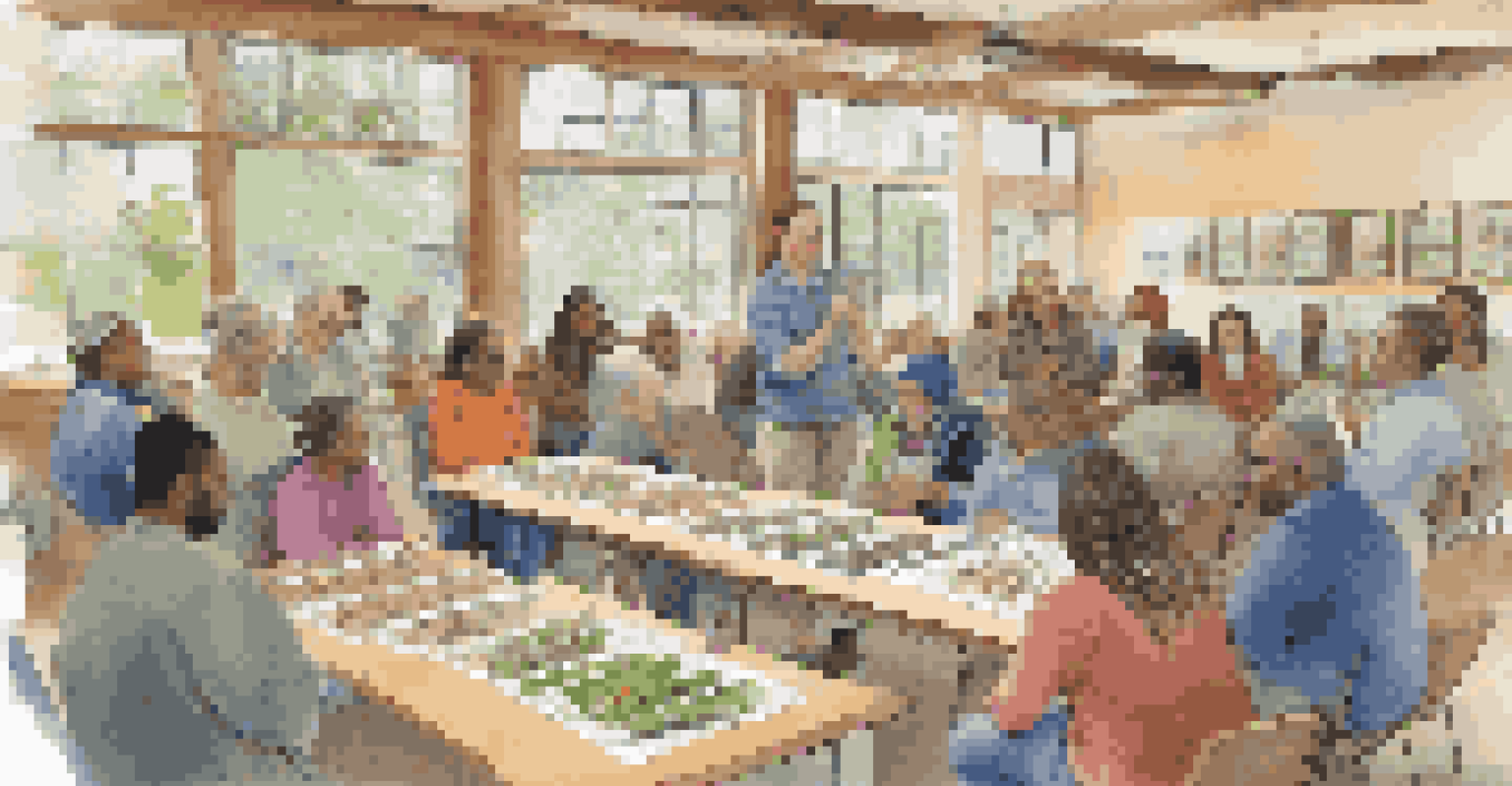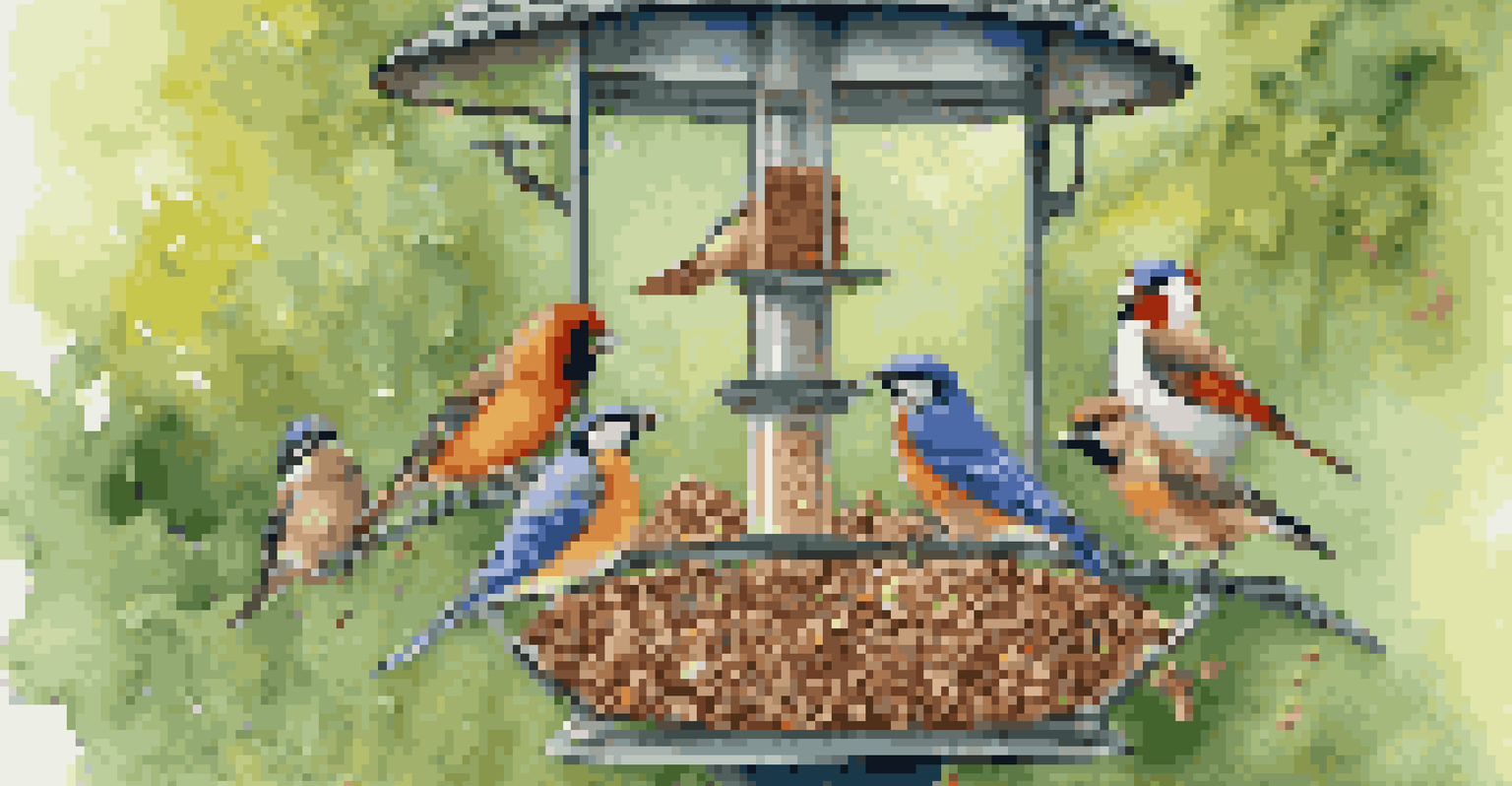Bird Feeding and Climate Change: Adapting to New Norms

Understanding the Link Between Bird Feeding and Climate Change
Bird feeding is an enjoyable pastime for many, but it's crucial to recognize its connection to climate change. As temperatures rise and weather patterns shift, the availability of natural food sources for birds can fluctuate significantly. This means that when we put feeders out, we're not just providing food; we're stepping into a larger conversation about how our actions can support or hinder wildlife.
In nature, nothing exists alone.
For instance, certain bird species may arrive at feeders earlier or later than they used to, depending on the changes in their migratory patterns influenced by climate. This shift can complicate the timing for bird enthusiasts who want to assist these creatures. So, as we fill our feeders, it’s essential to consider how our local climates are transforming and how this affects our feathered friends.
Understanding this link helps us appreciate the role we play in the ecosystem. By adapting our feeding practices, we can ensure that we’re not just feeding birds but also supporting their survival amid the challenges posed by climate change.
The Impact of Climate Change on Bird Habitats
Climate change is reshaping the habitats that birds rely on, leading to significant changes in their feeding and nesting behaviors. For example, rising temperatures can alter the types of plants that thrive in an area, which in turn affects the insects and seeds available to birds. Many species are struggling to adapt to these new environments, leading to a decrease in their populations.

Additionally, extreme weather events, such as hurricanes and droughts, can destroy habitats and disrupt food sources. Birds that once thrived in certain regions may be forced to migrate to new areas, impacting local ecosystems. As these patterns emerge, it's essential for bird feeders to be aware of these changes and adjust their offerings to meet the needs of birds in flux.
Bird Feeding Helps Combat Climate Change
By understanding the link between bird feeding and climate change, we can adapt our practices to support bird populations during environmental shifts.
By staying informed about habitat changes, we can better support our avian visitors. Tailoring our feeding practices to reflect the current environment can help ensure that birds have the nutrition they need during challenging times.
Choosing the Right Bird Feed for Changing Conditions
As conditions change, the type of bird feed we choose can make a significant difference in attracting and supporting local species. For example, if certain insects or seeds become scarce due to climate shifts, offering a variety of food options becomes crucial. High-energy foods, such as suet and nut blends, can provide the nutritional boost that birds may need during stressful periods.
What we are doing to the forests of the world is but a mirror reflection of what we are doing to ourselves and to one another.
Furthermore, it’s essential to consider seasonal variations when selecting bird feed. Many birds have specific dietary needs depending on the season, and adapting our feeding strategies accordingly can help them thrive. Offering food that aligns with their natural diet can encourage more birds to visit and stay longer.
By being proactive about what we offer in our feeders, we can help mitigate the effects of climate change on bird populations. The right mix of seeds, nuts, and other treats will create a welcoming environment that keeps our feathered friends nourished and healthy.
Creating a Bird-Friendly Environment Amid Climate Change
Beyond feeding, there are various ways to create a bird-friendly environment that accounts for the impacts of climate change. Planting native trees and shrubs can provide essential cover and food sources for birds, helping them find shelter and sustenance. Native plants are often more resilient to climate shifts, making them a perfect choice for sustainable landscaping.
Additionally, reducing pesticide use can encourage a healthier ecosystem, benefiting birds and their food sources. Healthy populations of insects are vital for many birds, especially during breeding seasons when they require protein-rich diets to feed their young. By fostering a balanced environment, we can contribute to the overall wellbeing of local bird species.
Choose Feed to Match Seasonal Changes
Selecting the right bird feed based on seasonal variations can enhance the nutritional support for birds as their natural food sources fluctuate.
Creating a bird-friendly habitat is not just about feeding; it's about fostering a holistic approach to conservation. Every small change in our gardens or yards can have a significant impact on local bird populations adapting to climate change.
Monitoring Bird Populations and Climate Effects
Monitoring bird populations is essential for understanding how climate change affects avian species. Citizen science initiatives, such as Christmas Bird Counts and local birdwatching groups, allow individuals to contribute valuable data. This information helps scientists track changes in bird populations over time and identify trends linked to climate factors.
By observing the types of birds that visit feeders and their feeding habits, enthusiasts can play an active role in conservation efforts. For instance, noticing a decline in certain species can prompt further investigation and conservation action. Engaging in these monitoring efforts not only supports scientific research but also deepens our appreciation for the birds we love.
Ultimately, the data collected through these initiatives can lead to informed decisions about how we manage our feeders and gardens. Understanding the birds' responses to climate change allows us to adapt our practices and contribute to their survival.
Community Involvement in Bird Conservation Efforts
Community involvement is a powerful tool in bird conservation, especially in the face of climate change. Local organizations often host events and workshops that educate residents about the importance of bird feeding and habitat preservation. By participating in these community efforts, individuals can learn how to make a meaningful impact on their local bird populations.
Collaboration with neighbors can lead to larger initiatives, such as creating bird-friendly parks or community gardens. These shared spaces can provide crucial resources for birds while fostering a sense of community. Working together can amplify our efforts to support avian life amid changing environmental conditions.
Community Efforts Boost Bird Conservation
Engaging in local conservation initiatives fosters both community bonds and effective strategies to protect bird habitats amid climate challenges.
Getting involved in these initiatives not only benefits birds but also strengthens community bonds. Together, we can advocate for sustainable practices that promote a healthier environment for both wildlife and people.
Looking Ahead: The Future of Bird Feeding in a Changing Climate
As we look to the future, the challenges posed by climate change will likely continue to impact bird feeding and conservation efforts. However, with awareness and adaptability, we can play a pivotal role in supporting our feathered friends. By staying informed about climate trends and their effects on birds, we can make proactive decisions that benefit local species.
Additionally, embracing innovative technologies and sustainable practices can pave the way for a brighter future for birds. For example, using bird feeders equipped with sensors can help monitor feeding patterns and bird activity, providing valuable insights into their needs. These advancements can guide our feeding practices, ensuring that we meet the changing demands of our avian visitors.

In conclusion, while the challenges are significant, the opportunities for positive impact abound. By adapting our bird feeding practices to the realities of climate change, we can contribute to the resilience of bird populations and foster a deeper connection with nature.